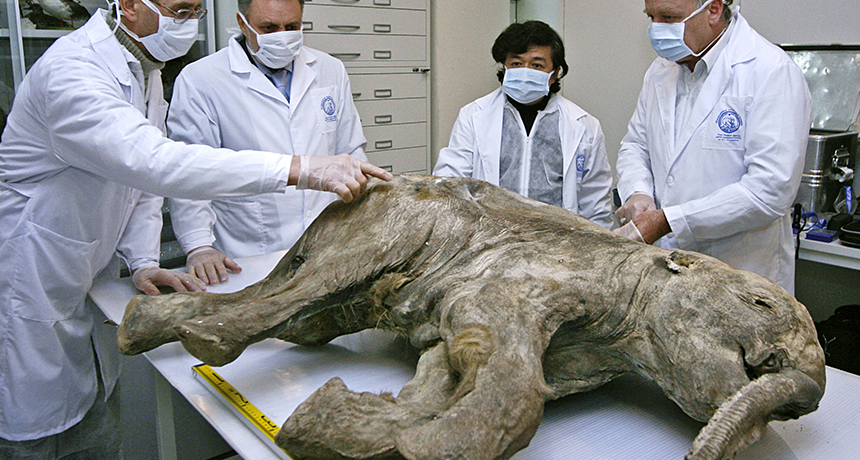The DNA is used to essentially copy the genome and create an embryo that has the DNA of the extinct animal. Unfortunately cloning is very difficult with a low success rate of 1-2.
 Extinct Species May Get A Second Chance Science News
Extinct Species May Get A Second Chance Science News
The study was published in the journal Theriogenology where it was detailed that frozen skin taken from a.
Cloning extinct animals. Also once a single animal is cloned in order for it to be useful in conservation biology it needs to reproduce. Fiester 2005 At present we have successfully clone other animals such as cows rats cats mice pigs and recently rats. What are the possible uses for cloned animals.
So as you can tell cloning an extinct animal isnt too easy to do. Cloning is an established process today which holds the promise of repopulating endangered and even extinct animals. For now the technique holds promise for helping endangered species including a.
This process is difficult and depending on the procedure has varying odds of success. Cloning produced the first animal clone that is a genetic duplicate of an animal in the form of Dolly a sheep who was born on 5 th of July 1996. This takes us to the next little detail.
Thanks to modern technology it is possible to bring back animals that were once extinct through the process of cloning. However several attempts at cloning extinct animals have not yielded decent results. In order to clone an animal from scratch so to speak scientists require DNA and a compatible surrogate mother.
Whenever the cloning of extinct animals is brought up images of the movie Jurassic Park tends to float to the top of the mind. By studying and practicing cloning and genetic manipulation in the creation of extinct animals scientists are discovering important information about DNA and genes and are learning new skills and techniques. Findings revealed January 23 in the journal Theriogenology describe the use of frozen skin in 2003 to clone a bucardo or Pyrenean ibex a subspecies of Spanish ibex that went extinct in 2000.
Concept of Cloning Extinct Species. In 2009 a team of scientists attempted and successfully cloned a bucardo or Pyrenean ibex which is a subspecies of Spanish ibex which was declared extinct in 2000. Advertisement De-extinction is about creating populations of healthy genetically vibrant animals that can be released into the wild where theyll be able to breed naturally and contribute positively to the environment.
Cloning eventually could bring back extinct species such as the passenger pigeon. Thanks to developments in cloning and gene-editing technology the prospect of bringing back extinct animals is looking more likely than ever. This is especially true if the species cloned is an extinct species like the Tasmanian Wolf or a Woolly Mammoth.
Read on to get an overview of it. Yet to even get to cloning an animal you need to finance your project first. So scientists might need to clone more than one.
We should only clone the recently extinct animals like the species we have caused to go extinct by hunting them until there were none left and ones that there is only one of such as the gallopogus tortise or animals that there are only a few left such as pandas and tigers and animals that poachers go after we shouldnt be screwing around with mammoths or brontosauruses and dinosaurs. Since the early 2000s using the same technique that produced Dolly researchers have cloned several endangered and even extinct mammals including a mouflon sheep and a bovine. Some people feel a sense of justice in the idea of bringing back a species that we destroyed.